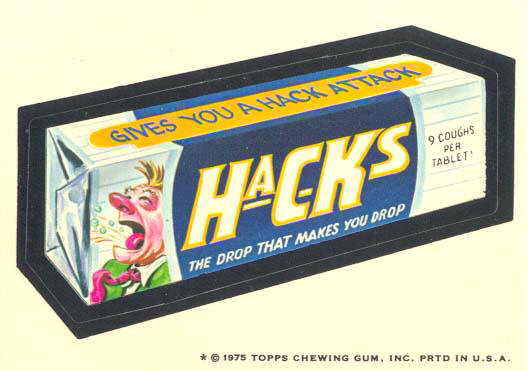I have to be honest, before this interview I knew nothing about HasOffers whatsoever, except that anyone could make their own affiliate network using the system. I thought perhaps it was some low-level system that had some basic features and was nowhere a possible competition for the “major” players. After this interview and some education, it became very clear that HasOffers is a serious competitor in its own right and that Lucas Brown, the CEO of the company knows what he is doing.
What inspired you to make an affiliate tracking software?
In the fall of 2008, my twin brother and I recognized a huge need in performance marketing. Many affiliate programs and networks (including our own) were depending on legacy tracking software that was slow, unreliable and extremely costly to maintain. Since we spent the previous three years developing our own tracking technology for another company, we decided to empower others with our modern technology and make a real impact in the performance advertising industry.
Just as Salesforce.com brought about revolutionary change by providing their software as a service, we are moving the industry to a simpler, more scalable era. Traditionally, starting an affiliate network would require signing a minimum one-year contract, paying exorbitant setup fees, and then waiting for the expensive legacy solution to be installed or integrated. The alternative was to build your own solution from scratch. These very limited options prohibited many online marketers and direct advertisers from getting started with affiliate marketing and learning how to use utilize affiliates as an effective and extremely profitable advertising medium.
We realized we need to build an automated sign-up process that allows companies to create their own white-label affiliate network in minutes, with no contracts, pay-as-you-go. Shifting affiliate tracking to true software as a service vastly lowers the barrier to entry, making it easier than ever for any company to get started. As a result of fewer barriers to entry and lower levels of risk provided by HasOffers, affiliate marketing is growing explosively, increasing advertiser spend and disrupting old models of online advertising.
HasOffers has been criticized in the past for opening the floodgates so “anyone can make an affiliate program?” What do you have to say to those who think this is a bad idea?
There have always been people who were afraid to make technology and information available to the masses. The argument is usually that some of those masses will use it for negative causes, but the real fear is that those with the illusion of power cannot hide behind expensive technology.
HasOffers is the center of innovation in an industry both run and plagued by old technology. A majority of brand advertising dollars still goes to search and display advertising. The Performance Marketing Association (PMA) suggests that a lack of transparency and education about affiliate marketing limits mainstream advertisers from participating with affiliate marketing. The only way to change this is through education and availability of proper technology for every business size. I suppose we have a fundamental difference in ideology than most competitors. It is that the more people involved in our industry, the more advertising spend comes in, and more benefit everyone will receive.
To those critics, I would say that this is an industry based on relationships and trust, and technology should be a standard, not a barrier.
As you know, a competitor was hit last year with the revelations that all the affiliate data of their affiliate networks were stolen and resold. What have you done to prevent this happening from you? Many companies who are now customers of HasOffers went through this stressful ordeal with DirectTrack. It was certainly a very scary situation for all involved. Our architecture and security programs are very different from our competitors, and though we cannot ethically discuss these on public record (in the interest of security), our dedicated system and network engineers are extremely protective of our infrastructure. As HasOffers continues to grow, our larger clients demand extremely thorough security documentation including emergency plans, best practices, data loss prevention, and layered security models, which has also helped us develop an extremely air tight environment for our clients to do business.
What differentiates HasOffers from competitors?
HasOffers tracking technology is far more efficient than any competing platform. Proprietary ad serving and tracking technology allows a single HasOffers server to support over 2 billion requests per month. HasOffers’ efficient ad serving and tracking technology is built in C, enabling it to support 500 percent more requests per ad server than legacy technologies. Requests to ad servers built in PHP or ASP.NET require servers to load 15 MBs of data or more into memory in order to complete each request, while the HasOffers’ proprietary ad serving technology only requires 215 KBs per request. This increased capacity provides a strategic advantage, allowing HasOffers to provide the most affordable ad serving and tracking solution in the industry. We urge anyone to test HasOffers along side any other system and let it speak for itself.
We are also the first company to provide complete fault tolerance by deploying clients’ ad servers on the Amazon Web Services’ EC2 cloud. We’ve combined this global deployment of the ad servers on the cloud with globally load-balanced DNS. This detects the location of the user making the request to the ad server and directs the user to the ad server in the facility that can respond the quickest. A user clicking on a tracking link in Germany will be handled by an ad server in the Ireland facility or a user viewing a creative in New York will be handled by an ad server in the Virginia facility. Global deployments of the ad servers with globally load-balanced DNS, increases performance by handling a users request with ad servers that are located thousands of miles closer to them. By dramatically reducing this latency, our ad servers are also able to handle requests even faster than before.
Our team also uniquely understands the value of scalability. While competitors only power an estimated few hundred clients each, HasOffers’ scalable technology has enabled more than 7,000 companies to create and manage their own affiliate networks. Our competitors simply don’t have infrastructures to support this many clients effectively.
What are some of your most notable Customers? Do they tend to be networks or advertisers?
Zynga, AdSimilis, Living Social, Tapjoy, Flycell, Adperio, Palms, adperio, MarketHealth, and the list goes on.
In the beginning our primary customers were networks, within the past year more and more advertisers are adopting HasOffers to manage their in-house affiliate programs. About 55% of our clients are networks and 45% advertisers.
Do you recommend super affiliates to use HasOffers to track their deals?
We do have some super affiliates that user HasOffers to track their campaigns, but they are a minority. There are certainly many solutions focused on tracking the performance for affiliates across multiple networks. We find that super affiliates tend to start their own affiliate networks with us as that is often the next logical step for them.
There are a lot of mentions about your API, What makes your API unique?
Our API is the only complete two-way API, including over 400 API methods and 60 API data models. An API of this magnitude is completely unprecedented in affiliate tracking and is sure to open up vast opportunities for so many companies. The API makes it possible to develop customized applications that run on top of the HasOffers platform. No other affiliate network software has an API this powerful.
The API makes it possible for our clients to transform HasOffers to fit every possible need. Every feature in the HasOffers application is documented and available to use through the HasOffers API. Clients can build applications or customize their current HasOffers application software with the same access to integration for managing advertisers, offers, and affiliates. With the HasOffers API it is easy to create new affiliates, generate tracking codes for new affiliates, and generate any statistics and reports.
Some clients are creating a competitive advantage by implementing completely unique graphic interfaces for their HasOffers account using the API. Other clients are using the New API to build widgets that connect with CRMs and billing systems. A few clients are now building our affiliate tracking software into a gateway monetization system.
What fraud systems are built into the HasOffers System?
Our software gives our clients insight to identify and prevent fraudulent conversions. We classify fraud into two types. Affiliate profile fraud and activity fraud. Affiliate profile fraud analyzes whether the affiliate’s details are suspicious or linked to other fraudulent accounts. This allows our clients to identify potentially malicious affiliates before they are given access to offers. Activity fraud analyzes actual conversion data to identify fraudulent activity. This analyzes IP addresses, conversion times, referring domains, duplicate IPs, comparative EPCs, etc.
We’ve also spent a lot time ensuring our core tracking technology prevents fraudulent conversions. Referral domains can be enforced for conversion pixels and IP addresses enforced for server postback URLs. There are options to limit the number of conversions by IP address and date as well as identify conversions generated by proxies. Tracking links, conversions pixels and server postback URLs can be encrypted with unique hashes. The application also provides ample and filtered information in the reports to give our clients the power to investigate each conversion.
How easy would it be for a network to move to HasOffers?
HasOffers has spent a great deal of time perfecting the migration process for networks. We realize this is the only real deterring factor for larger potential clients, especially depending on the current system they are using, so we have dedicated on-boarding specialists to help with the process. Most clients considering migrating to HasOffers reach out to us because they are already having tracking issues, frustrations with processes, or difficulty managing affiliate data, and we realize each business model has unique struggles. Our on-boarding specialists have not only developed smooth processes for migration across the most common platforms, but they are skilled in adapting to unique circumstances. This should certainly not be a prohibiting factor in moving a business to a new level of technology and innovation.
Do you recommend that most people move to Server to Server Tracking and why? What are the advantages of this?
For our clients with the technical understanding, we certainly recommend implementing cookieless tracking. With HasOffers, cookieless tracking can also be implemented with iFrames or image pixels, providing a hybrid of client side and server side. This way affiliate third-party pixels can still piggy back on conversions as well. With only server to server pixels enabled affiliates have to implement a server to server pixel as well, which many affiliates don’t have the software or knowledge to accomplish.
If a user does not have cookies enabled on their browser, usually an iFrame/Image pixel will not record a conversion, but by implementing cookieless conversion tracking, users with cookies disabled will still be tracked. We do this by passing a transaction ID (tracking ID) to the advertiser’s landing page on click. Then the advertiser passes this transaction ID to the conversion pixel or server postback URL. Our ad servers look up the user’s tracking information by the transaction ID and record conversions accordingly. This is a great way to ensure conversion tracking accuracy.
 What inspired your staff to get up in the morning?
What inspired your staff to get up in the morning?
Passion. After participating in every piece and angle of online advertising, we realized that we should concentrate on the part that we really love, and believe it or not, that’s performance tracking technology. So we surround ourselves with people who share our passion. You might describe HasOffers as one big crazy brainstorm on the future of online advertising, and we think that’s the most exciting thing we could be doing. You can really see the unity it brings our team.
What is your dream car?
I don’t have a dream car. Cars are not a big thing in Seattle. I’d prefer a mansion on Lake Washington.
 3) Neverblue. Clearly one of the contenders always for the #1 spot is Neverblue. With their own great tracking system, access to programs and offers you could never get anywhere else, they are always a highly recommended network. While their corporate executives are completely hidden from the rest of the community, Samantha Brachat has become the face of the company in many ways. Additionally, twice a year they take their top affiliates somewhere around the world for a great vacation and get them really drunk. What else do you need to know?
3) Neverblue. Clearly one of the contenders always for the #1 spot is Neverblue. With their own great tracking system, access to programs and offers you could never get anywhere else, they are always a highly recommended network. While their corporate executives are completely hidden from the rest of the community, Samantha Brachat has become the face of the company in many ways. Additionally, twice a year they take their top affiliates somewhere around the world for a great vacation and get them really drunk. What else do you need to know? 2) Peerfly. Wowzers. As mentioned, Peerfly came out of nowhere this year, based on one thing: completely and total loyalty from their affiliates. Everyone at this company is really nice, and the company considers their employees and affiliates like family. What you get here is a company that makes it clear that they enjoy what they do, and respect their affiliates to the most and appreciate the opportunity to work with them.
2) Peerfly. Wowzers. As mentioned, Peerfly came out of nowhere this year, based on one thing: completely and total loyalty from their affiliates. Everyone at this company is really nice, and the company considers their employees and affiliates like family. What you get here is a company that makes it clear that they enjoy what they do, and respect their affiliates to the most and appreciate the opportunity to work with them. 1) ClickBooth. Not even sure where to start with Clickbooth. Despite a creepy mascot in the form of Clicky, the androgynous orange dude with the deformed head, they have built an amazing brand. Their team is excellent from the ground up, with a kick ass affiliate management team, a drop dead gorgeous PR department, and leadership that has becoming highly respected in the industry over the last decade. Plus, even though they have amazing growth each year, they are still growing and have their own campus and street named after them.
1) ClickBooth. Not even sure where to start with Clickbooth. Despite a creepy mascot in the form of Clicky, the androgynous orange dude with the deformed head, they have built an amazing brand. Their team is excellent from the ground up, with a kick ass affiliate management team, a drop dead gorgeous PR department, and leadership that has becoming highly respected in the industry over the last decade. Plus, even though they have amazing growth each year, they are still growing and have their own campus and street named after them.







 Because he remembered I like Jazz, Joran told me about a Half-Off deal on a jazz club that just reopened.
Because he remembered I like Jazz, Joran told me about a Half-Off deal on a jazz club that just reopened.
 Missy Ward & Clicky at Affiliate Summit West 2011
Missy Ward & Clicky at Affiliate Summit West 2011
 Clickbooth’s Fan Page
Clickbooth’s Fan Page
 Ad:Tech’s Fan Page
Ad:Tech’s Fan Page
 Good one, Guys.
Good one, Guys.



















